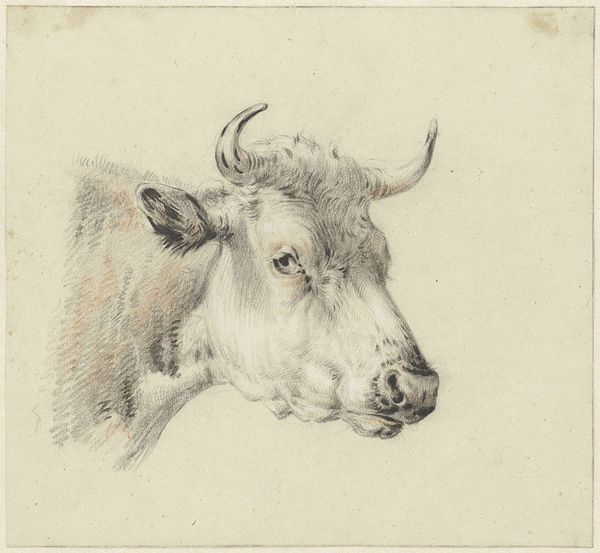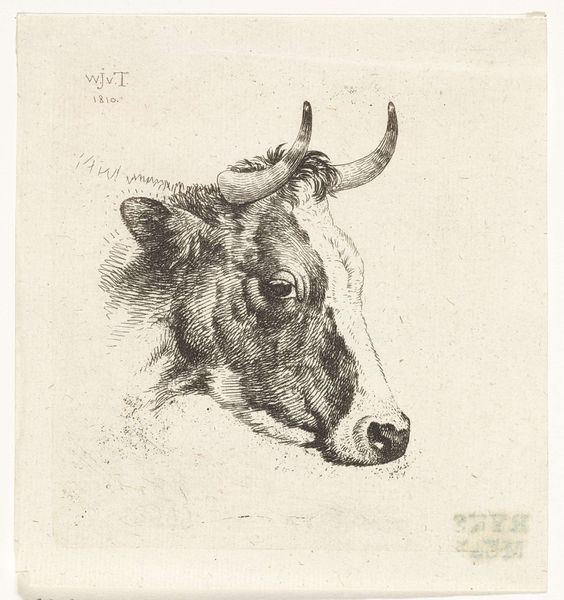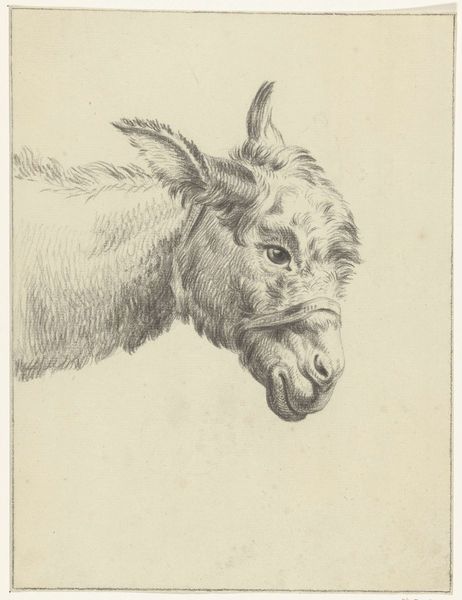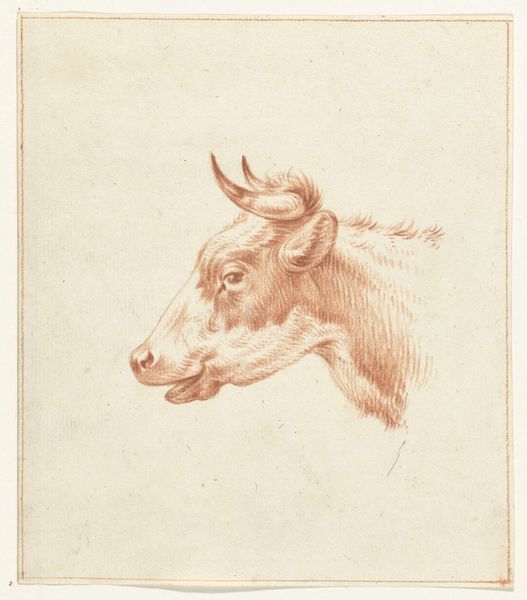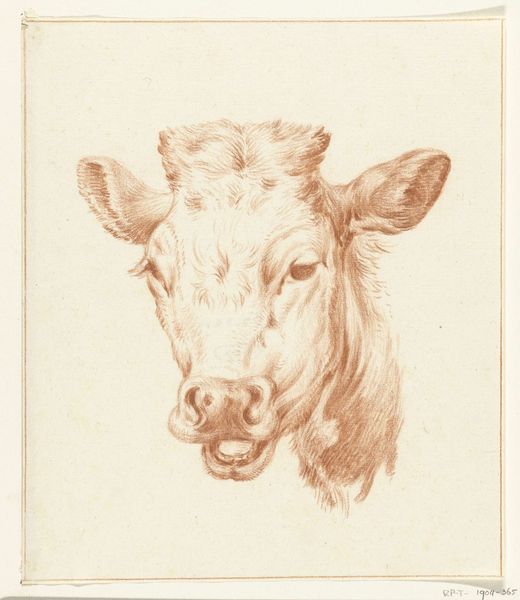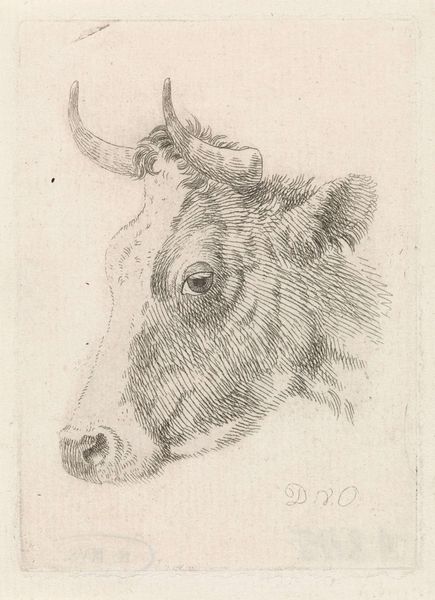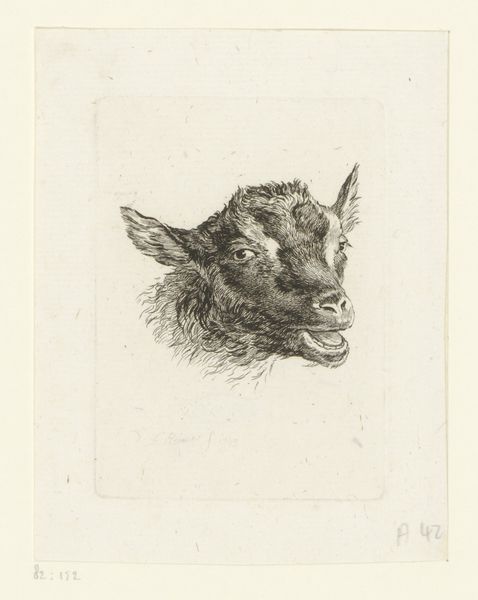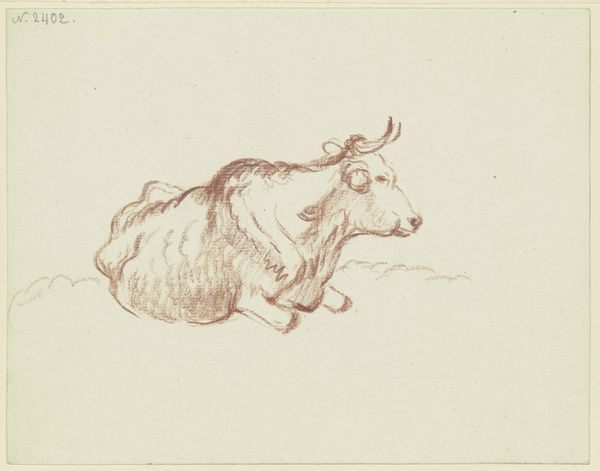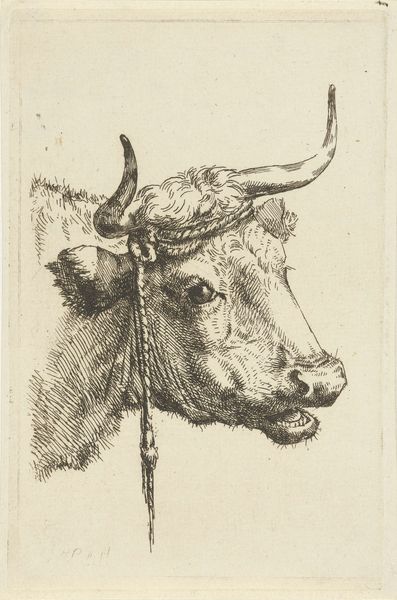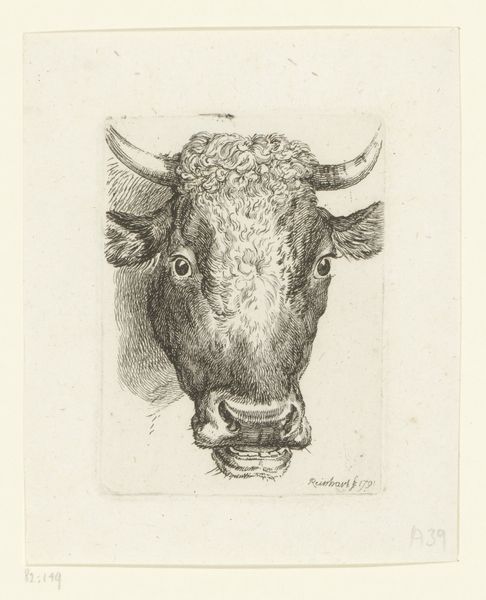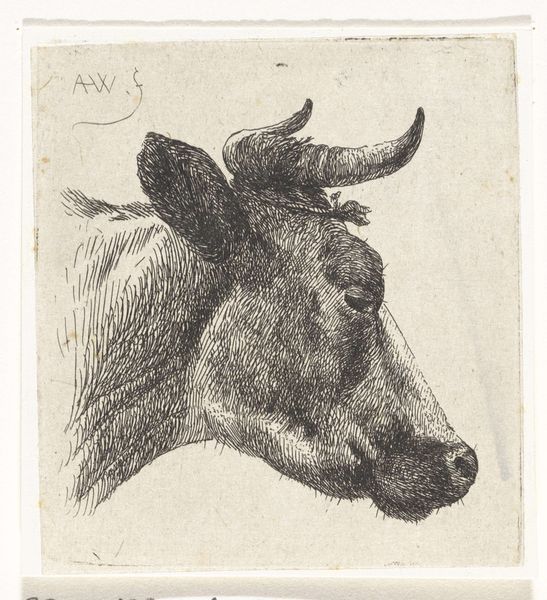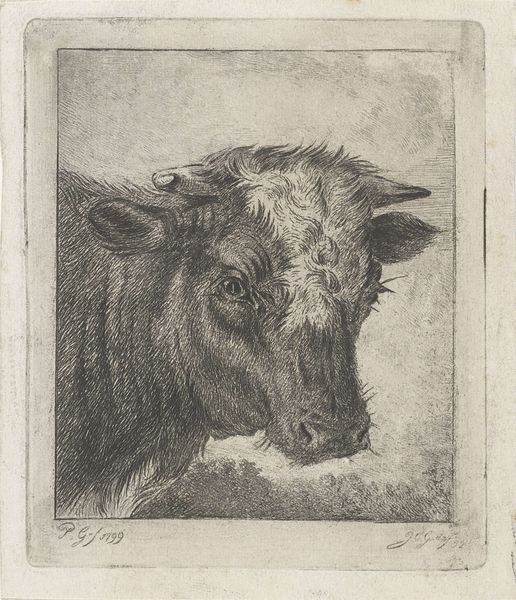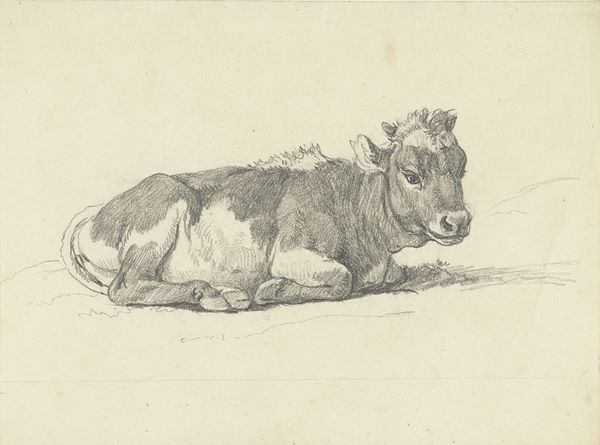
drawing, pencil
#
portrait
#
pencil drawn
#
drawing
#
animal
#
pencil sketch
#
pencil drawing
#
pencil
#
realism
Dimensions: height 202 mm, width 166 mm
Copyright: Rijks Museum: Open Domain
Curator: It's striking, isn't it? A seemingly simple yet powerfully evocative pencil drawing. Editor: It's rather melancholic, I think. The muted tones, the animal's heavy gaze… there's a certain vulnerability that really stands out. Curator: Indeed. This drawing, titled "Head of a Cow, with a Ring through the Nose," was created around 1820 by Jean Bernard. The artwork employs just a humble pencil on paper to render an image that feels almost monumental in its simplicity. Let’s consider the social context that enabled, maybe even necessitated, its production. Editor: You mean, its presence in the Rijksmuseum forces me to wonder what role such an image played in the cultural imagination of 19th-century Holland? Were there specific agricultural movements impacting the portrayal of livestock like this? How do the contemporary debates around animal use play out in our reading of the artwork today? Curator: Absolutely. The means of production are worth our attention as well. The accessibility of pencil as a material democratized image-making; artists of varied social backgrounds had at least the possibility to portray the world around them. Here, you see not only the material, but the artist’s labor is evident in each careful pencil stroke. And look at how those individual marks accumulate and communicate the volume of the animal’s face, capturing an honest, if somewhat unflattering, depiction. Editor: The composition directs my eyes. The stark, cropped view pushes us right up against the animal, making it impossible to ignore the intrusion represented by the ring in its nose. How does this contrast with other animal depictions in the gallery? What is the social purpose of a close-up portrait like this? Curator: I would like to know what the animal suggests about dairy farming practices during that period and its relation to labor, land ownership, and market economics, especially in a country developing an international profile around dairy. Editor: Ultimately, I find myself feeling deeply sympathetic towards this cow. Its forced servitude seems magnified here, an enduring statement of agrarian power structures. Curator: It is this kind of insight that encourages a fuller vision of art’s contribution to our history, even with such seemingly simple sketches like this one by Bernard. Editor: Precisely, seeing art through the prism of power gives older images continued social and cultural relevance.
Comments
No comments
Be the first to comment and join the conversation on the ultimate creative platform.
